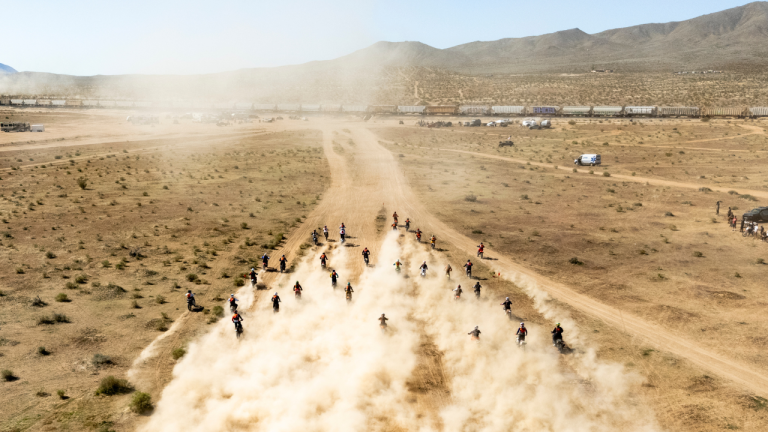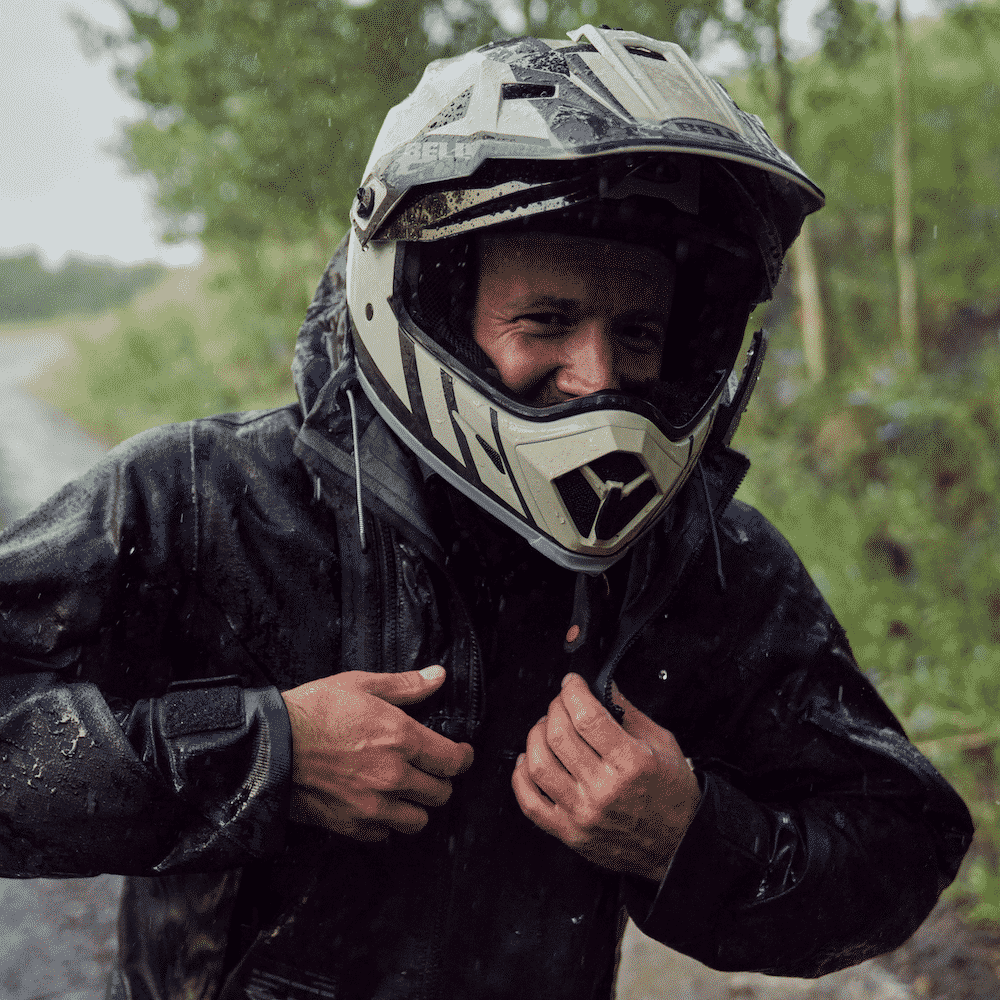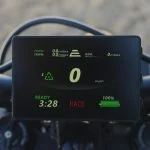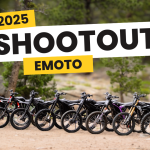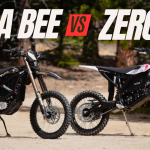Old-School Desert Vibes Meet High-Voltage Machines
Pulling up to the 2025 Biltwell 100 felt a bit like showing up at a race a half century ago. Think On Any Sunday vibes: retro bikes everywhere, riders in vintage kit, and the smell of premix in the air. This Southern California desert race is famed for “good times, not lap times,” a just-for-fun scramble where you can find a 1940s Harley flathead banging bars with a KTM 1290. It’s a wild, throwback scene – except for a handful of us buzzing around without making a sound. That’s right, Biltwell added two new Electric classes this year, so amidst all the brapping and clattering of vintage iron, you now have the silence of electric dirt bikes at the start line. The contrast was as vivid as it sounds: picture a Stark Varg lining up one row behind a clapped out Yamaha DT175. The vibe was equal parts friendly and “wait, is that thing really racing?” – which is what we were thinking about the Coleman pull-start bikes and what they were probably thinking about us – exactly the laid-back, slightly absurd atmosphere that makes the Biltwell 100 special.
And race we did. Over 600 riders tore through the Mojave whoops and sand washes this year, and 19 of us did it on electric. Zero Motorcycles showed up in force with electric bikes in various classes, including a fleet of brand-new Zero XEs (their new mid-weight electric dirt bikes) and even a couple of their hefty DSR/X adventure e-bikes. As one of the riders piloting a Zero XE in the Electric Endurance class, I was about to find out a lot about this new machine.
The Electric Crew and My Zero XE Build
Zero Motorcycles wasn’t shy about embracing the throwback race with futuristic tech. Under the Zero tent, we had an impressive lineup: four Zero XEs (the company’s new trail-focused electric dirt bike), one Zero XB (the new lightweight mini moto), two DSR/X adventure electrics, and even one modified Zero FX for good measure. Fellow electric racers brought out other steeds too – everything from Stark Vargs to KTM Freeride E-XC’s. CRC brought out some wild custom builds on the platform of Arctic Leopard EX800 and Altis Sigma MX’s. In short, the Electric Endurance class had a bit of everything.
My weapon of choice: a nearly stock Zero XE. This bike is a brand-new model in 2025, a 223-pound mid-size electric dirt bike with about 15.5 kW (21 hp) of peak power and a 4.3 kWh removable battery. We wanted to race the XE mostly how it comes out of the box, but a few key mods were necessary for desert racing:
- Tires: We ran a Dunlop Geomax MX33 rear and the new MX34 front for better bite in the soft sand. The stock tires were okay, but we wanted some more aggressive knobbies with a bit more sidewall.
- Handlebars & Grips: I swapped in a ProTaper Husqvarna-bend handlebar (similar height with less sweep than stock) and ODI half waffle grips.
- Footpegs: The stock pegs were a bit dull, so Warp 9 hooked us up with some custom footpegs. They’re nice and sharp, keeping my boots planted through the chattery chop.
- Gearing: To squeeze a bit more top speed out of the XE, I went down a tooth on the rear sprocket (from the stock 49T to a 48T). The XE tops out around 54 mph in stock form; with a slightly smaller sprocket I’d hope to get a few extra MPH at the cost of a little low-end grunt – a worthy trade for the fast sections.
Aside from those tweaks (which are things we’d do on almost any bike), the Zero XE remained basically stock. No secret sauce, no crazy hacks – just a fresh set of Dunlop knobs and ergonomic upgrades to help me survive 50 miles of desert.
Zero XE – Key Specs at a Glance:
Battery: 74 V, 58 Ah lithium (≈4.3 kWh) removable pack
Peak Power: 15.5 kW (approx 21 hp)
Weight: 223 lb (101 kg)
Wheels: 21” front / 18” rear (off-road ready)
Riding Modes: Eco, Standard, Sport (with adjustable regen)
Race Day: Dust, Whoops & Battery Strategy
Race day morning, we rolled our XE’s to the start line amid a swarm of decades of internal-combustion evolution. Being a new class, Electric Endurance (our 2-lap, ~50 mile race) was slotted toward the back of Saturday’s starting order. That meant we’d be eating dust – a lot of dust. In true desert fashion, Biltwell uses a live engine rubber band start by class, so when our turn came, we stood there straddling silent bikes. Then snap – the elastic released and off we went, a pack of near-silent racers plunging into the haze of sand.
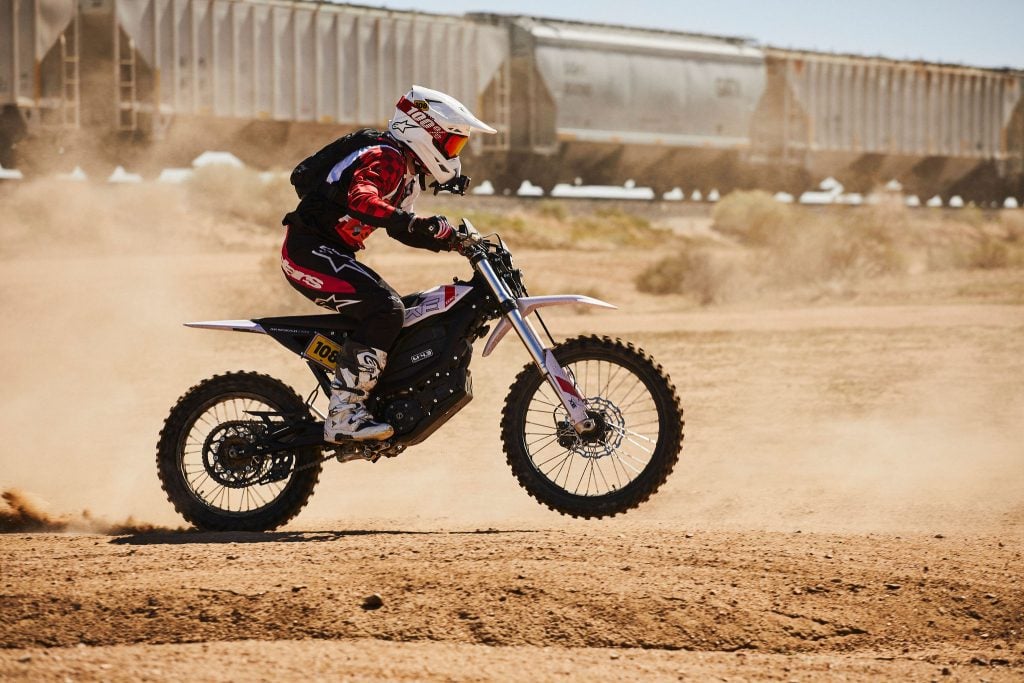
Dust. I can’t overstate it – the first mile was pure brownout. With hundreds of bikes ahead of us over the previous rows, the course was an opaque fog of silt and whoops. I had gotten a good reaction to the rubber band, but a fair amount of wheel spin on the desert sand and the extra horsepower of the other bikes caused me to fall back quite a bit on the start. I was immediately grateful for the quick throttle response of the Zero. One blip and I could dart around slower traffic as visibility allowed. The XE felt alive in the early going: lightweight and easy to flick. As the dust gradually spaced out, Zero test rider, Trevor Doniak and I were neck and neck, and we tried to settle into a rhythm. The terrain was classic Mojave desert – endless small whoops, patches of deep sand, and the occasional rocky stretch or dry wash. The Zero’s suspension was doing a fine job; it soaked up the whoops far better than I expected for a stock setup. In testing, I’d found it a tad soft, but with the race adrenaline, I hardly noticed. The rear shock was causing some swapping in the repeated whoops, but riding the bike with that characteristic in the back of my head, it reacted fairly predictable.
Passing people on vintage bikes was a trip. We’d come up on clusters of riders on 70s Husqvarna’s or clapped-out two-strokes, and they often didn’t hear us until we were right next to them. By mid-race, we had passed dozens upon dozens of riders from earlier classes.
Our battery swap strategy was in full effect as well. The Electric Endurance rules allowed battery swaps, and we took advantage of that big-time. We planned three swaps over 50 miles, which meant I didn’t need to conserve power – I could ride the XE flat-out and just trade in for fresh juice when needed. The first 13-mile stint, we were riding the bike pretty hard, then dove into our pit where the Zero pit crew had Battery #2 waiting. We did another swap at the halfway point (25 miles) just to be safe, and a final swap at the 38 mile mark with about 12 miles to go to ensure I had full power for the finish. Battery life on the XE proved to be roughly 20-25 miles of hard racing per pack, which was actually right on par with our expectations from testing (about ~28 miles when pushing 100%. The ability to swap packs quickly was a game-changer – it’s the only reason an electric bike can tackle a 50-mile desert race at race pace. Major kudos to the Zero team pit crew (and Zero’s engineers for a modular design); without them, it would not have been possible.
The only hiccup my Zero experienced was a touch of overheating. As the course opened up into some fast, sandy straightaways, I held the XE wide open for longer stretches. After a few minutes pinned at roughly 50 mph in deep sand, I felt the power output taper off. The heat warning light flickered, so the only option was to back off as much as possible and let the airflow cool the motor. It wasn’t a major issue, just a reminder that even electric bikes need a breather when flogged non-stop. Aside from that, the XE ran like a champ: no mechanical issues, no mysterious shutdowns. Meanwhile, some gas bikes around me were dropping like flies – I have never seen so many broken-down machines in a race.
The Finish Line & Results
By the end of the second lap, nerves were feeling fried, caked in dust from head to toe, but grinning ear to ear. The stock Zero XE not only finished, but finished well. I ended up taking 4th place in the Electric Endurance class, right behind Zero’s own off-road test rider and former pro rider Trevor Doniak, who snagged 3rd. In fact, Trevor and I had a friendly rivalry going most of the race; he’d started a bit ahead and it took everything I had to reel him in. That guy can ride – he kept his podium spot, and I was more than happy to roll in just a minute or two behind him for 4th.
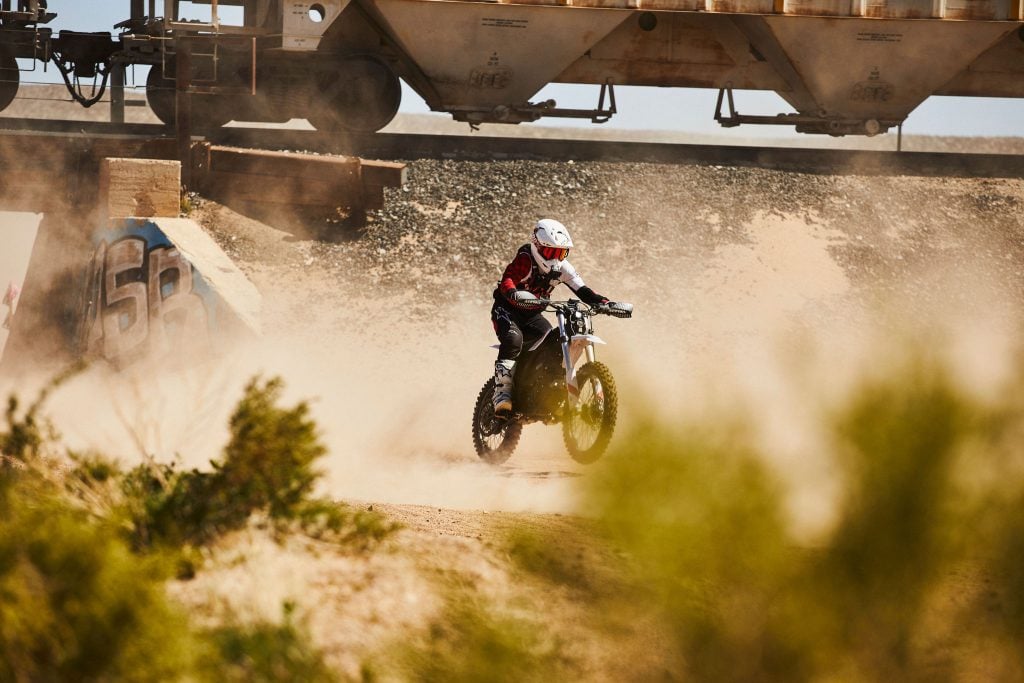
(For the record, the top two spots in our class were taken by some of the most modded eMoto’s I’ve seen from CRC Motorsports – an Altis Sigma and Arctic Leopard that were almost indiscernible from their stock iterations)
To put a bow on it, here are the official results for the Electric Endurance class (2 laps, ~50 miles):
Electric Endurance – Top 5 Finishers
| Position | Rider (Bike) | Total Time |
| 1st | Tim Ritson – Altis Sigma (CRC Mod) | 1:25:13 |
| 2nd | Austin Rocha – Arctic Leopard (CRC Mod) | 1:27:10 |
| 3rd | Trevor Doniak – Zero XE | 1:28:53 |
| 4th | Tucker Neary – Zero XE | 1:30:28 |
| 5th | Deegan Burdine – Arctic Leopard (CRC Mod) | 1:36:12 |
A New Chapter for Desert Racing
When the dust settled (quite literally – I’m still coughing days later), the Biltwell 100 proved that electric motorcycles can hang with the old guard in one of the best vintage desert races around. The event organizers kept the mood light and welcoming, for oddballs new and old. There was a real camaraderie in the pits – gas or electric, everyone was just pumped to ride and have a good time.
Racing the Zero XE in that environment was equal parts hilarious and inspiring. Zero’s effort of entering a fleet of bikes paid off with several finishers and even some trophies, and the other brands/DIY builders showed that innovation is alive and well in the eMoto scene. In the end, we didn’t just prove that “you can’t race electric here” was a myth – we hopefully solidified a new chapter for the event. Good times, not lap times? How about both.

